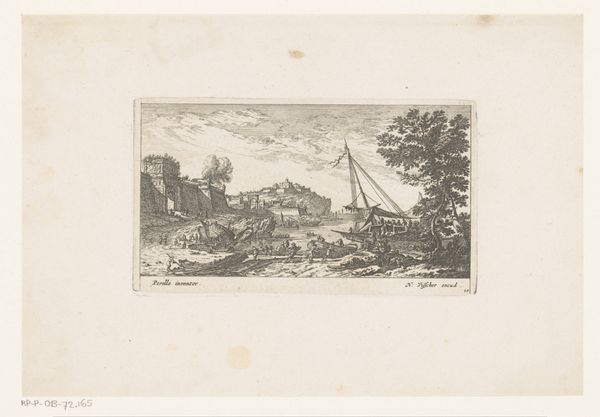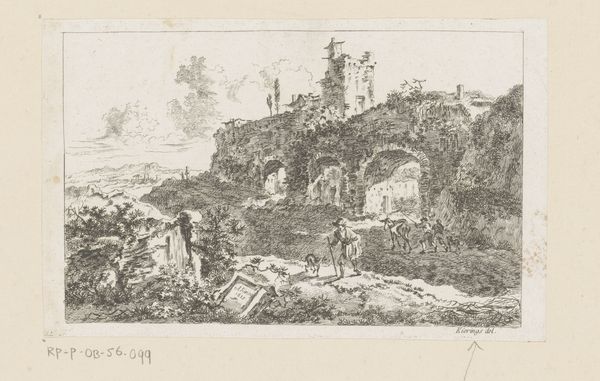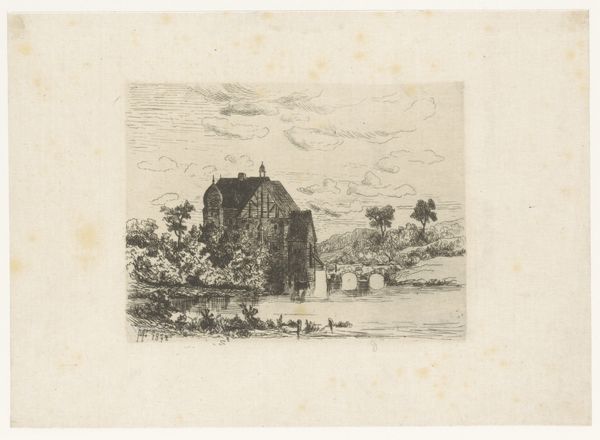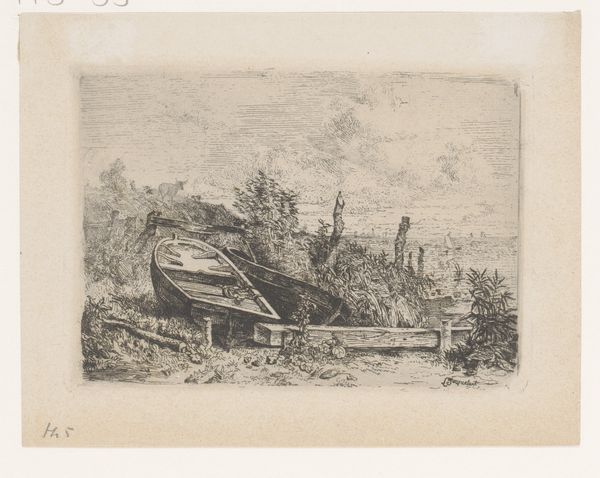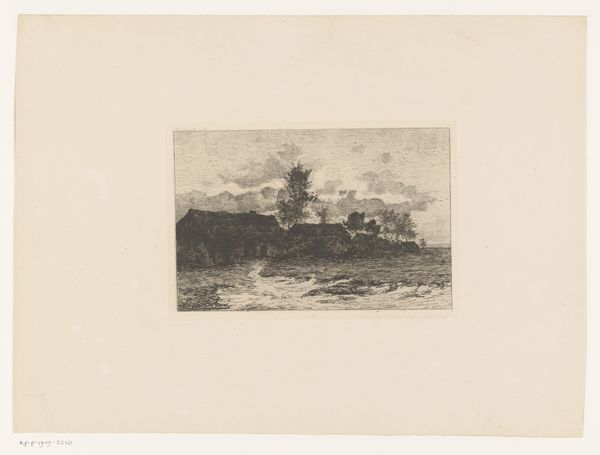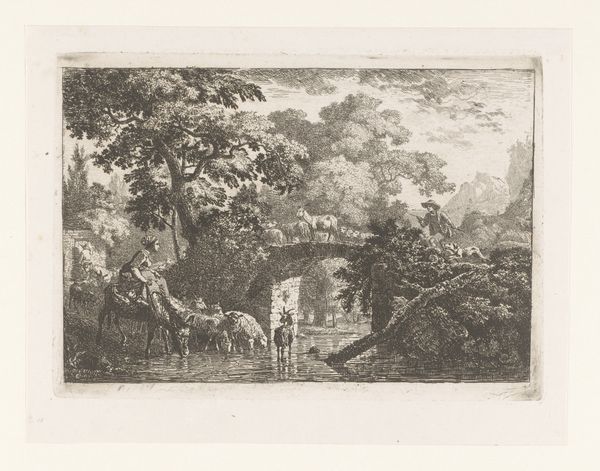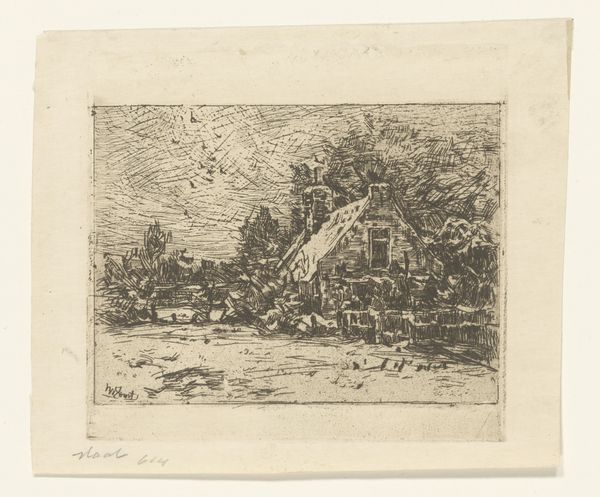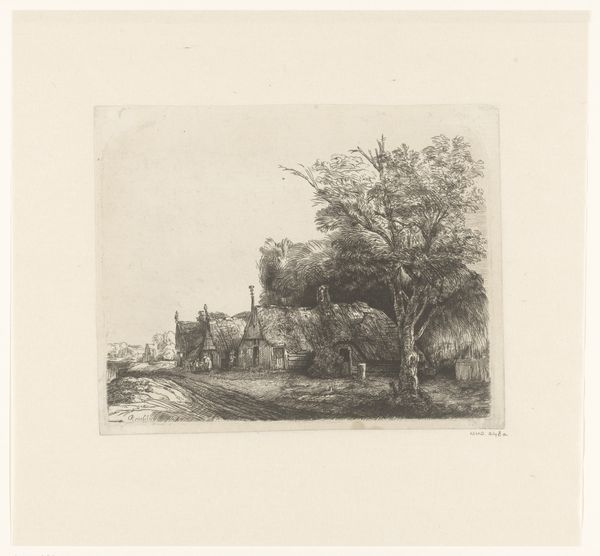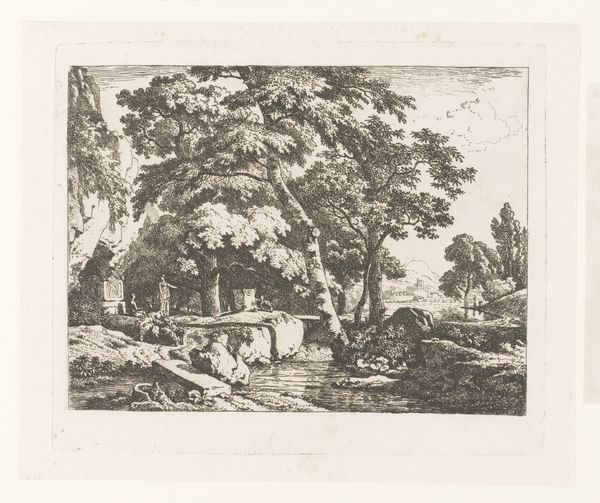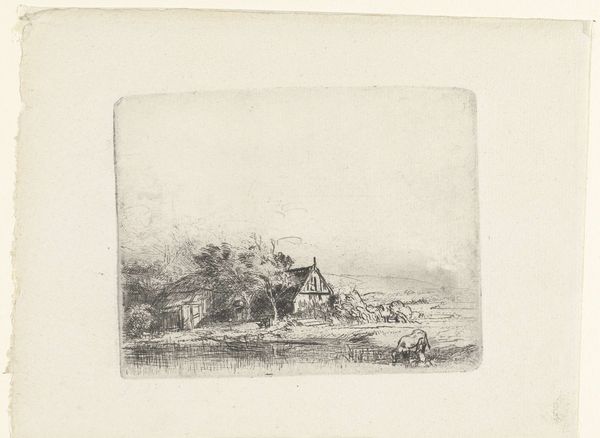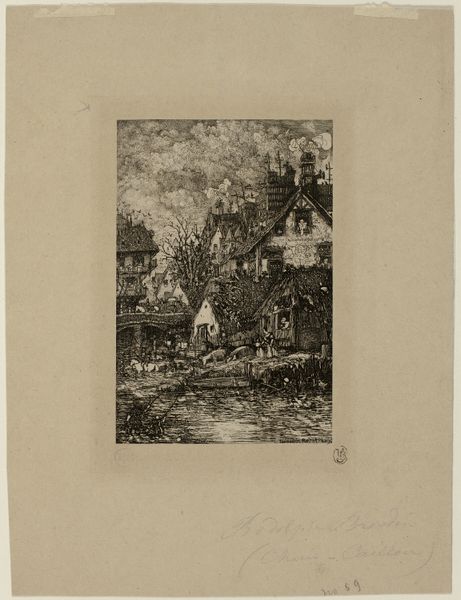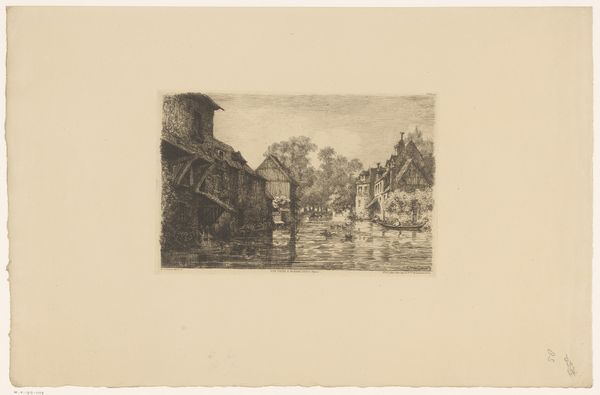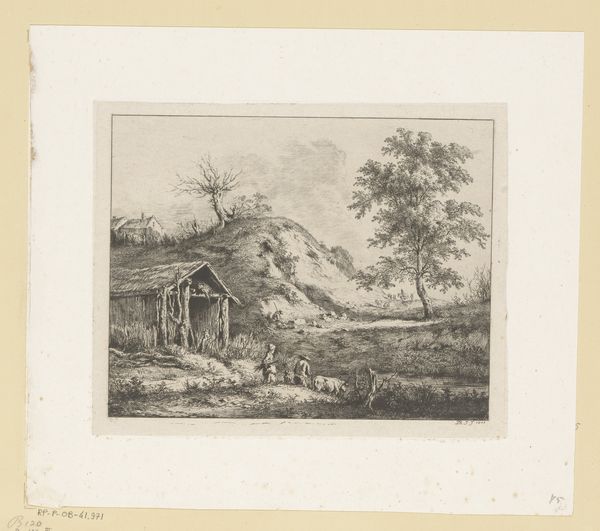
Dimensions: height 92 mm, width 130 mm
Copyright: Rijks Museum: Open Domain
Lambert Jacquelart made this etching of a rowing boat near a ruin sometime in the 19th century. The incised lines of the printmaking give it a distinct graphic quality, with the monochromatic tones emphasizing the textures of the ruin's stone and the surrounding foliage. Etching as a medium is significant here, as it's an indirect process. The artist would have coated a metal plate with a waxy, acid-resistant material, drawn through it to expose the metal, and then bathed the plate in acid. The acid bites into the exposed lines, creating grooves that hold ink. The plate is then cleaned, inked, and pressed onto paper. The labor of the printmaker is thus distinct from that of a painter or sculptor, involving a sequence of technical steps. What does that labor produce here? Not just an image, but also a potentially repeatable commodity. This etching is not just a one-off artwork, but an artifact produced through a system that reflects the wider social and economic conditions of its time. It is also a testament to the skilled work of Jacquelart who knew how to combine technical mastery with artistic expression. By understanding these processes, we can appreciate how this image emerged from a complex web of materials, techniques, and social context.
Comments
No comments
Be the first to comment and join the conversation on the ultimate creative platform.
